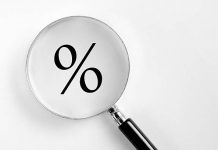The NFIB’s small business optimism index fell 0.4 points to 104.4 in December. The headline print came in a touch above market expectations for a 103-point showing. The index has drifted lower over the last four months, but remains elevated relative to history. What’s more, with the confidence measure hovering around 107 throughout the year, 2018 marked the most optimistic year in the survey’s history.
The performance among the survey’s subcomponents was mixed, with six deteriorating and four improving on the month. The share of firms expecting the economy to improve recorded the biggest decline, dropping 6 points to 16% – much lower than the 37% recorded in December of the year prior. The share of firms reporting higher earnings this quarter over last (-3 points to a negative 7%) and those that believe that now is a good time to expand (-5 points to 24%), marked other notable pullbacks.
On the other hand, the employment subcomponents came in strong. Employment picked up steam in December (up 0.25 m/m – the fastest pace since July), while plans to increase employment also improved (up 1 point to 23%). Concerns regarding the quality of labor remained the most pressing issue for business owners despite easing off slightly (-2 points to 23%), whereas unfilled job openings rose to an all-time high of 39% (up 5 points m/m).
Businesses continued to boost compensation to attract workers – 35% of firms raised compensation, up 1 point m/m, while the share of those planning to do so in the months ahead remained elevated (-1 point to 24%).
The share of firms making capital expenditures over the last 6 months held steady at a decent 61%, but capital outlay plans continued to drift lower and are down 8 points from the August cyclical peak.
Key Implications
Given concerns regarding monetary policy, trade uncertainty and the pronounced late-year selloff in equity markets, the slight decline in small business confidence in December may not be entirely unwarranted. Yet, despite the recent losses, the headline confidence measure remains elevated relative to history, suggesting that morale among American small businesses is still quite upbeat. What’s more, the December report also carried a few positive nuggets, the most noteworthy being the labor market indicators which wholeheartedly echoed the strength of the December jobs report.
2018 as a whole marked the best yearly showing since the survey’s inception as far as confidence goes, with fiscal stimulus and regulatory changes the main supports behind this performance. Going forward, while we still expect both small business confidence and overall economic growth to remain at healthy levels, a confluence of factors suggests that 2018 may stand as a high watermark.
Among the factors pointing to a moderation are the fading boost of fiscal stimulus, higher interest rates and capacity constraints (already on display among the labor market metrics) that will continue to bind. For their part, America’s small firms seem to be in tune with the slower-growth narrative, as the share of firms expecting the economy to improve shrunk by more than half compared to this time last year. The current government shutdown, despite it being expected to be short-lived, will add to near-term pressures.












